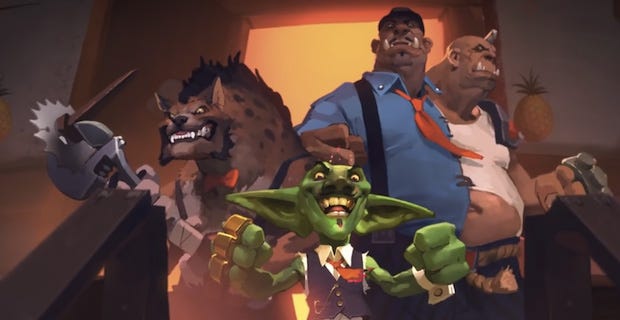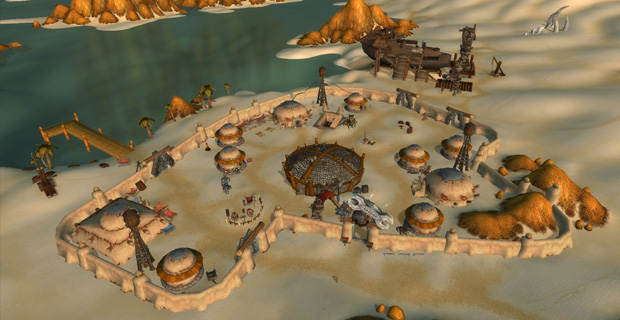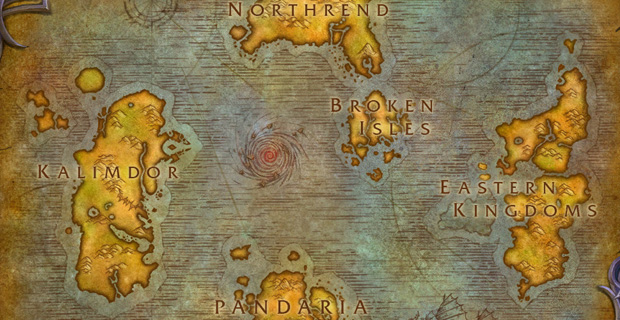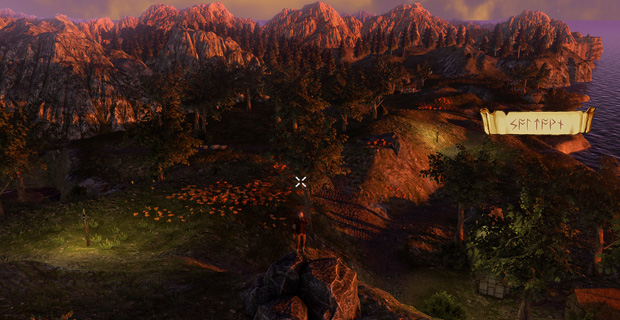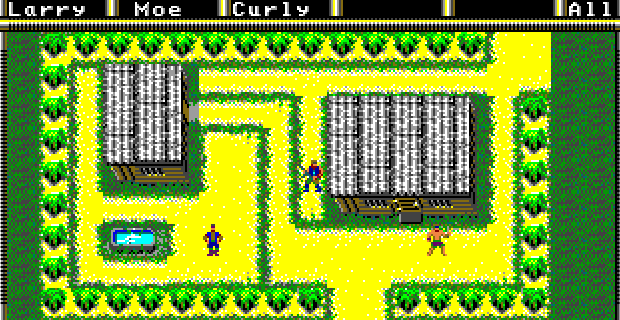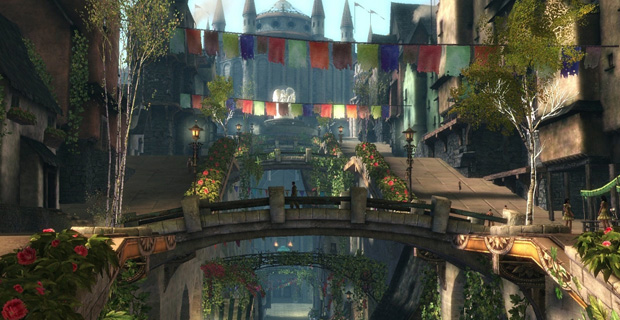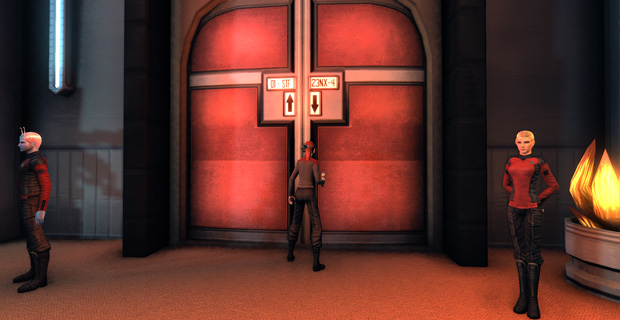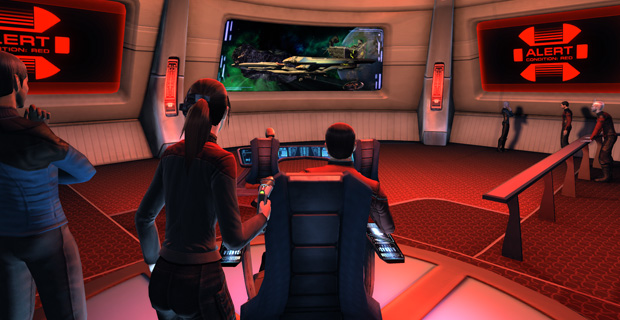The RPG Scrollbars: Size Matters
Welcome to the big time, pal!
Even by Blizzard's standards, The Mean Streets of Gadgetzan is taking the piss. In case you missed it, which I know you didn't, but work with me here, it's the newest Hearthstone expansion. The trailer is wonderful. The setting is a corrupt crime-town full of gangsters, hoodlums and mugs, all fighting for cash and control in a tongue-in-cheek mix of Lord of the Rings and Bugsy Malone. I'd love to play a full adventure/RPG/heck even shooter set in that world, not just play with a new set of cards using it as a theme. In just a minute of charismatic art and a fun song, Blizzard fleshed out Gadgetzan with more love and more detail than some games manage in their entire runs.
But, uh, here's the thing. This is what Gadgetzan actually looks like.
...
One second while I rewrite the trailer. Blizzard, you're welcome.
"Ah, Gadgetzan! I vaguely remember going there."
Gadgetzan. Where nobody makes a fuss.
Gadgetzan. Home of maybe ten huts.
Nobody goes. It's a low level zone.
The tiny port of Gadgetzan...Gadgetzan. Smaller than Booty Bay
Gadgetzan. Real far out of the way
At least it's not the Barrens, it's over in Tanaris
The port of Gadgetzan!Everywhere you're looking, everyone is- uh, um-
"Everyone's in Dalaran, pal!"
Not the Mean Streets of Gadgetzaaaaaaaan.
I mean, goodness me. Scale in RPGs is always interesting, and typically done with a nod and a wink. It's not how big something is that determines how large we're meant to consider it, but its relative scale. The capital city of Stormwind for instance has a canonical population of 200,000, yet in terms of actual buildings would struggle to hold a few hundred. Just down the road, Goldshire is little more than a pub and a couple of houses, intended to represent around 7,000 farmers and miners and their families. Heck, Azeroth itself has been calculated as being small enough to fit on the Isle of Wight. Specific size estimates vary, but it's not much of a planet.
That's not a problem though, because once actually in that space, all the different biomes and encounters help fill up the space, and Blizzard pulls every trick in the book to further increase the perceived scale. Having to get onto a boat to switch continents for instance creates a sense of distance purely with a loading screen and a map. Much of the rest is then carried by the fact that we know why it has to be this way. Expected population numbers, the density of quests, the amount of time people want to spend just following a road instead of hitting things and hearing dings...
Still. Turning Gadgetzan into... that? That's pushing it a bit.
Looking at it though, it did get me thinking about other games and how they handled it. RPGs have always been somewhat unique in how they treat size versus content. Yes, there are exceptions, but historically the big sell was that if you bought an RPG, you were buying a lot of game for your money. That was initially okay because most of them focused heavily on combat, and it's not that hard to build out a world with a million things to fight. As story and fidelity became more important, we started to see the two sides pulling against each other, with worlds shrinking or finding/adopting different methods to represent space. Different world-scales for overworld exploration and cities for instance. Maps for the overworld, leaving deep exploration for cities. Flipping it completely, with exploration in the overworld leading to menus when actually arriving anywhere. The trend though was and remains firmly towards shrinkage.
In 1991 for instance, Ultima VII (take a shot) presented Britannia as one continuous world. Later that decade, nobody blinked when Fallout and Baldur's Gate opted for a discrete map that just highlighted the points of interest and treated the journey between them as mere detail. Now, Ultima successor Shroud of the Avatar also uses this method. And it makes sense. As theoretically cool as it is to have something like The Elder Scrolls Arena offer unlimited procedurally generated landmass, it's rarely long before the experience loses its appeal and actually making progress wins out. Space games have their time-skips and their hyperdrives. RPGs have their magic maps and conveniently adventurer-focused cities. Those that have leaned towards the realism of scale haven't typically done so well for it. The Elder Scrolls Arena for instance may have kicked off one of the world's biggest franchises based on a huge world, but even by the third game everyone involved was going "Let's just do a single island instead."
That being said, it's interesting how a map itself can contribute to the sense of scale. I'd argue for instance that Fallout's world always felt cramped, not because of the amount of content or even the number of grid squares it had on the map, but how compressed that map feels on the screen. Skyrim meanwhile offers a view of a world it feels impossible to fully explore. World of Warcraft's feels epic despite 'knowing' how small it is, in no small part because of the different levels of zoom to dig through to get to where you want to be, up to and including alternate worlds.
The worst example ever though has to be the unofficial/not Wasteland sequel Fountain of Dreams. If anyone had played it, I'd say it was the defining example of how not to do maps. The map is tiny, and surrounded by a wall that you'd be forgiven for thinking you were meant to get past to enter the main part of the game. No, that's all of it. There are only three locations of interest, and those are small too. Worst of all though, the purpose of the game is to find a legendary fountain capable of curing mutation. It is twenty steps from your house. I counted! And while admittedly you can't actually find it until you know that via the main quest, I can't think of a less satisfying outcome.
To finish off, here's the question of the week - as you've probably guessed, it's which worlds have managed to convince you with their scale, and which have blown it completely? I've picked a couple of examples to get started with.
On the good side, the city of Divinity's Reach in Guild Wars 2. In general, I think GW2 does a good job with this, but Divinity's Reach for me is what Stormwind desperately wants to be. It's a stunning place to explore, made even more impressive by the fact that it's not even the world's capital - that's the city of Lion's Arch. Nevertheless, it's a huge multilevelled place full of different districts, where the ceremonial artwork is as intimidating and patriotic as it could possibly be. It's also a brilliant example of game artistry in its own right, wasting little space where it could squeeze in a few tall buildings and unreachable but still visible places for its population to be crammed into. It's majestic, and all should bow to its majesty.
And on the flipside... wow, does anyone remember Star Trek Online at launch? It's different now, thankfully, but I've never seen a game so confused. It somehow managed to make space, the final frontier, feel small and cramped, while the interiors... look, there's reasons why MMOs tend to be built to about 1.5 scale. When you've got a lot of players clustered around, or fighting to get through doorways (whether there's collision detection or not) or otherwise taking up space, you need a little extra. Still, Star Trek Online is the only game I've ever played that clearly expected an audience of giants...
Seriously. Does Starfleet provide its captains with opera glasses?
Again, thankfully those were shots from a long time ago, that I just happened to have around because I was so amused at the time. It's fixed now, thankfully. Well, I say 'fixed'. Perhaps someone was just assigned to clean the code, misunderstood, threw the whole game into the wash and it shrunk. Either way, result. At least the infinite majesty of space is now finally where it should be - outside the damn ship.
